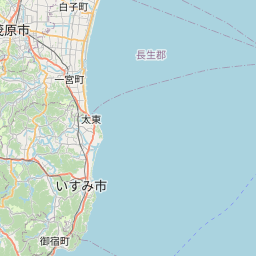ここに行くには
今日は横浜線小机駅から歩いて、城跡のある「小机城址市民の森」に行きます。「小机城址市民の森」には駐車場がないので、遠くからのビジターは、出発点が「小机駅」になると思います。それなので、駅からスタートして、城跡の中心部を周って。第三京浜道路を越え、出城だったと言われる場所まで行き、周遊して駅まで帰ってくるコースをご紹介します。それでは、小机駅から出発しましょう。

振り返ると「小机駅前」交差点がありますので、右に曲がっていきます。商店街の通りを進みます。


「小机辻」という交差点のところで、右に曲がりましょう。途中に金剛寺というお寺がありますが、奥の高台が「古城」と呼ばれた場所だったようです。


その先の横浜線の踏切を渡りましょう。渡った後に「小机城址」の案内があります、次の交差点を左です。閑静な住宅地ですが、線路の方を見ると、向こう側も結構な台地になっています。もしかすると城がそこまで続いていたかもしれません。



城跡への入口はどこでしょう。また案内があります。まだ住宅地が続きますが、急に竹林が現れます。突然、別世界に入った感じです。そうするうちに小机城址市民の森の入口「根古谷広場」に着きました。



特徴、見どころ
巨大な土塁と空堀
「根古谷」とは、山城の麓の屋敷地という意味だそうなので、城主か城代、家臣たちの屋敷があったかもしれません。それでは、城跡へ登っていきましょう。麓からの高さは、20メートルちょっとです。竹林と城跡が一体化していて、すばらしいです。

登ったところが、城を囲む土塁の上です。内側に、ものすごい空堀が見えます。土塁と空堀のセットで、城を守っていたのでしょう。土塁の上を歩いていきましょう。空堀の向こう側に、土塁が高くなった場所があります。その場所は櫓跡で、監視をしたり、土塁や空堀に侵入した敵を攻撃するためでしょう。



遊歩道が下ったところから、空堀の中を歩くことができます。この空堀は、今でも幅約20メートル、深さは12メートルありますが、かつては深さが約20メートルもあったという記録があります。他の堀(北空堀)を約2メートル掘っても底には到達しなかったそうです。堀の形もまっすぐではなく、曲げられています。北条氏の堀の特徴である「畝堀」は見つかっていませんが、簡単に登ったり進めたりできないようになっているのでしょう。それから、空堀の両側に土塁を巡らせた「二重土塁」になっています。


城跡中心部とすばらしい竹林
今度は、城跡の中心部にやってきました。市民の森の案内図の向かい側には「井楼跡(せいろうあと)」があります。これも櫓のことです。近くの土塁の上にも「櫓台」がありますので、こちらはお城の中心的な櫓だったのかもしれません。それでは「二の丸広場」の方に入っていきましょう。名前に「二の丸」と付いていますが、城跡としては「東郭」と呼ばれています。ここを本丸とする説もあるのです。発掘調査をしたときには、建物の柱の穴が見つかっています。倉庫など、城の施設があったと考えられます。領民が集められてここで訓練していたのかもしれません。





二の丸広場の裏手を下ると、また見どころがあります。郭の周りを囲む空堀が、遊歩道になっているのです。城跡と自然がミックスされた道を、リラックスして歩けるのです。歴史派も自然派も、楽しめます。


次は「本丸広場」に行ってみますが、その間にあるのが「つなぎの曲輪」です。ここにある「櫓跡」に行ってみましょう。ここからは、空堀が見渡すことができます。先ほど、空堀の向こうの土塁からみた櫓跡なのです。「つなぎ」といいつつ重要な曲輪だったのです。


本丸広場に向かいます、城跡としては「西郭」と呼ばれています。中は、スポーツができる場所になっています。名前は「本丸」となっていますが、先ほどの「二の丸」と一緒で、確定されてはいません。「本丸」と名付けた事情はわかりませんが、よく防御された場所にあるとは言えるでしょう。例えば、もう一つの入口の前には、馬出しがあって、簡単に中に入れないようになっていました。それでその奥に、門を再建してみたのかもしれません。



出城をまわって帰還
周遊コースの最後は、第三京浜道路を越えて、出城があったかもしれない場所に行きます。現地の城の想定図でも、その辺りを「出城」と表示しています。第三京浜の下のトンネルを通るので、一旦台地から降ります。トンネルを出たら、今度は上りです。登りきると、向こう側の城の丘が見えます。周りが開けていたら、見張り台がありそうなところです。




残念ながら、明確なお城の遺構は見つかっていないそうですが、とにかく、天辺まで行ってみましょう。その天辺は小山のようになっていて、石碑があります。「富士仙元大菩薩」と書かれていて、江戸時代のものだそうです。頂上の小山も、その時代に、富士塚として築かれたのでしょう。もしかしたらこの下に、出城の遺構があるかもしれませんが、このミニ富士山も切にしてほしいです。


ここから戻りますが、来た時と違う方向に行きます。すると、また世界が急に変わった感じがします。そこが市民の森と、市街地の境界なのでしょう。大都会の自然や史跡を守るのは大変なのです。駅に戻るには、出たところにある駐車場を抜けて、道を下っていきます。しばらく歩くと、幹線道路にぶつかりますので、左に曲がります。その道路をまっすぐ行くと、城跡に向けて曲がった「小机辻」交差点に至ります。駅はもうすぐです。


私の感想
きれいな竹林に飾られた城跡を満喫し、住宅地から急に別世界に入ったような感覚も面白かったです。もしかしたら城の範囲だったかもしれないところも、周遊して回れたので、かつての城の姿を想像してみるのもありだと思いました。

また、小机駅のすぐ近くには、横浜市城郷小机地区センターがあって、城の模型や、パンフレット、歴史の展示や書籍などがあります。城跡に行く前か行った後に立ち寄ってはいかがでしょうか。

リンク、参考情報
・大倉精神文化研究所 横浜市港北区地域の研究(シリーズわがまち港北)
・広島市立中央図書館/広島市立図書館貴重資料アーカイブ
・「横浜の戦国武士たち/下山治久著」有隣新書
・「歴史群像149号 戦国の城 武蔵小机城/西股総生著」学研
・「太田道灌と長尾景春/黒田基樹著」戒光祥出版
・「「太田道灌状」を読み解く/尾崎孝著」ミヤオビパブリッシング
・「小机城を明らかに―小机城跡埋蔵文化財試掘調査について―」横浜市教育委員会
・「小机城を明らかに―小机城跡発掘調査成果報告会―」横浜市教育委員会
これで終わります。ありがとうございました。
今回の内容を趣向を変えて、Youtube にも投稿しました。よろしかったらご覧ください。


















































































































